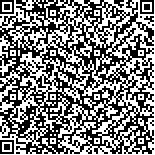| 摘要: |
| [目的]种养结合有利于促进农作物秸秆和畜禽粪便的资源化利用,进而减少农业面源污染,促进农业绿色发展,当前确定区域种养的匹配问题是发展种养结合的关键。[方法]文章根据农田氮养分平衡理论,基于农作物秸秆和畜禽粪便就地就近利用的原则,结合种植和养殖业年度统计数据,利用修正的氮养分平衡法估算舒兰市畜禽养殖环境承载力,并分析全市各乡镇的种养平衡状况。[结果]2015年舒兰市单位农用地面积的实际畜禽养殖量为173头/hm2(猪当量),理论估算出的单位农用地面积畜禽养殖环境承载力为146头/hm2(猪当量),实际畜禽养殖量已经超出畜禽养殖环境承载力的上限; 在17个乡镇中,有8个乡镇的实际养殖量还没有达到畜禽环境承载力的上限; 如果考虑到畜禽粪便加工成有机肥可销往外地的情况,当全市有20%的畜禽粪便加工成有机肥,就能实现全市的种养平衡。[结论]在将来县域发展种养结合过程中,通过发展有机肥产业是缓解实际畜禽养殖量超出畜禽养殖环境承载力上限的可行办法,同时,应加强各乡镇的种养匹配的量化估算,科学规划各乡镇种植与养殖结构使之实现种养平衡,减少因种养不匹配带来的环境承载力负荷过大的问题。研究结果为舒兰市养殖业的可持续发展提供科学指导,为“南畜北移”战略的实施提供参考依据,对推动县域农业绿色发展具有一定的启示意义。 |
| 关键词: 种养结合种养平衡畜禽养殖环境承载力氮养分平衡法舒兰市 |
| DOI: |
| 分类号:F3263 |
| 基金项目:中央级公益性科研院所基本科研业务费专项“新型农业经营主体生态循环农业技术模式与运行机制研究”(1610132018044) |
|
| STUDY ON ENVIRONMENTAL CARRYING CAPACITY OF LIVESTOCK AND POULTRY BASED ON THE COMBINATION OF PLANTING AND BREEDING IN SHULAN CITY |
|
Huang Xianlei1, Zhao Junwei1, Fang Linna1, Zhang Yang1, Yin Changbin1,2※
|
|
1. Institute of Agricultural Resources and Regional Planning, Chinese Academy of Agricultural Sciences, Beijing 100081, China;2. Research Center for Agricultural Green Development in China, Beijing 100081, China
|
| Abstract: |
| The combination of planting and breeding is conducive to promoting the resource utilization of crop straw and livestock and poultry manure, which is helpful to reduce agricultural non point source pollution and promote the green development of agriculture. However, how to determine the match between breeding and breeding is the key to developing the combination of breeding and breeding. Based on the theory of farmland nitrogen and nutrient balance and the principle of using crop straw and livestock and poultry manure in Farmland System, this research collected annual statistics of planting and breeding industry in Shulan city, and evaluated the environmental carrying capacity of livestock and poultry by using nitrogen nutrient balance method (NNBM). The results showed that the environmental carrying capacity of livestock and poultry in Shulan city was 14.6 heads/hm2 (equiualent to pigs) in 2015, however, the actual amount of livestock and poultry was 17.2 heads/hm2 (equivalent to pigs). The actual amount of livestock and poultry had exceeded the environmental carrying capacity of livestock and poultry, which led to agricultural pollution. In 17 towns of Shulan city, there were 8 towns that the actual amount of livestock and poultry had not exceeded the environmental carrying capacity of livestock and poultry, this meant that these towns still had the potential to develop breeding industry. If considering organic fertilizer processed from livestock and poultry manure could be sold to other city, when 20% of these livestock and poultry manure were processed into organic fertilizer, the planting breeding balance of Shulan city could be achieved. In the future, the development of organic fertilizer industry is a feasible way to alleviate the actual amount of livestock and poultry exceeding the upper limit of environmental carrying capacity of livestock and poultry. Meanwhile, to reduce the environmental pollution caused by the mismatching of planting and breeding in towns, it is necessary to strengthen the estimation of the environmental carrying capacity of livestock and poultry of each town. These findings not only provide scientific guidance for the sustainable development of breeding industry in Shulan city, but also provide scientific basis for pollution regulation of breeding industry at the county level, and thus promote the development of combination of planting and breeding. |
| Key words: combination of planting and breeding planting breeding balance environmental carrying capacity of livestock and poultry (ECCLP) nitrogen nutrient balance method (NNBM) Shulan city |

